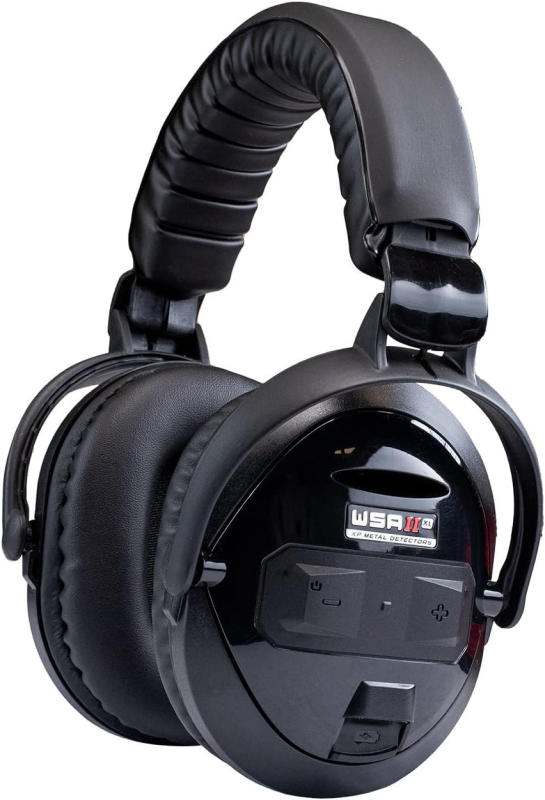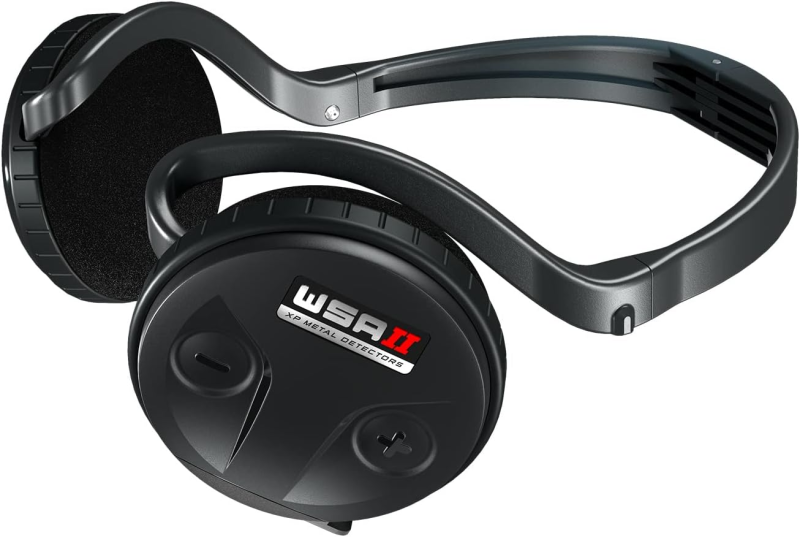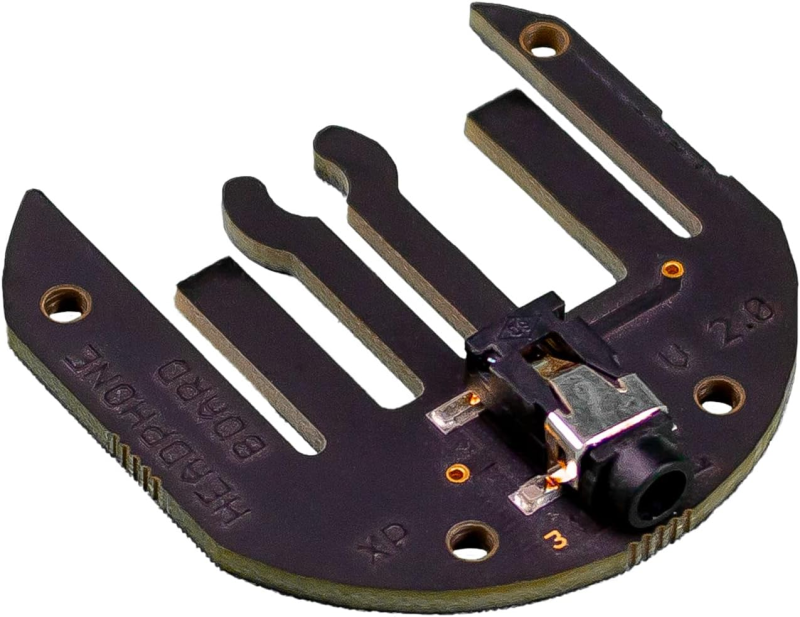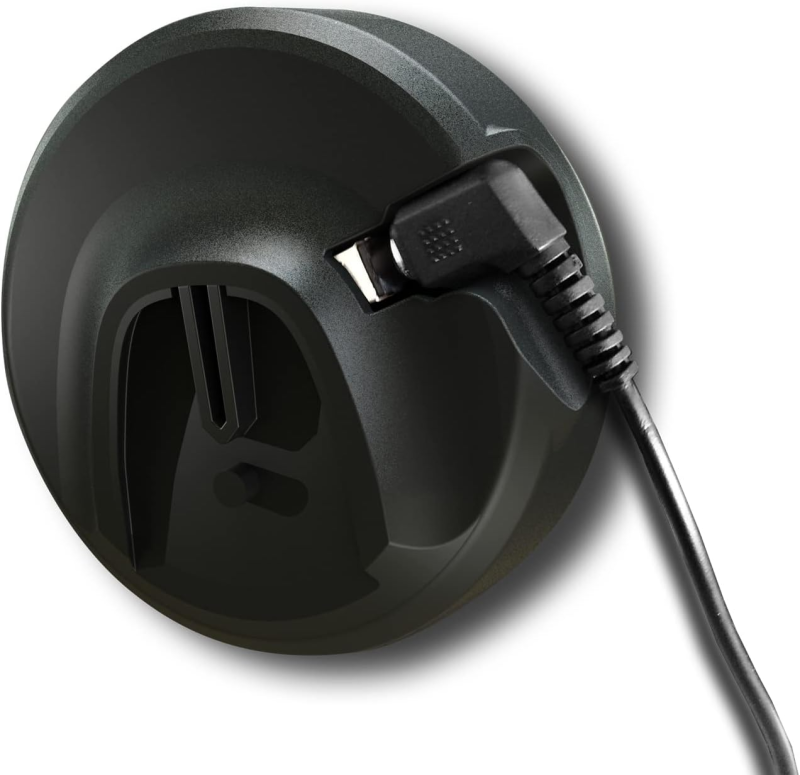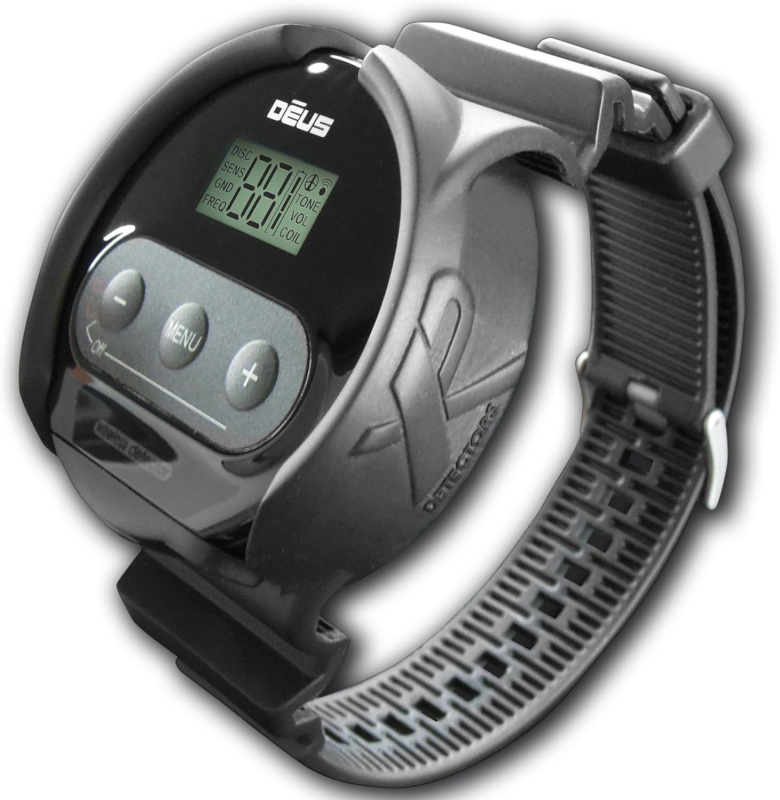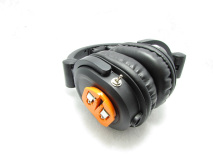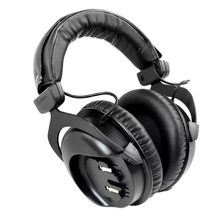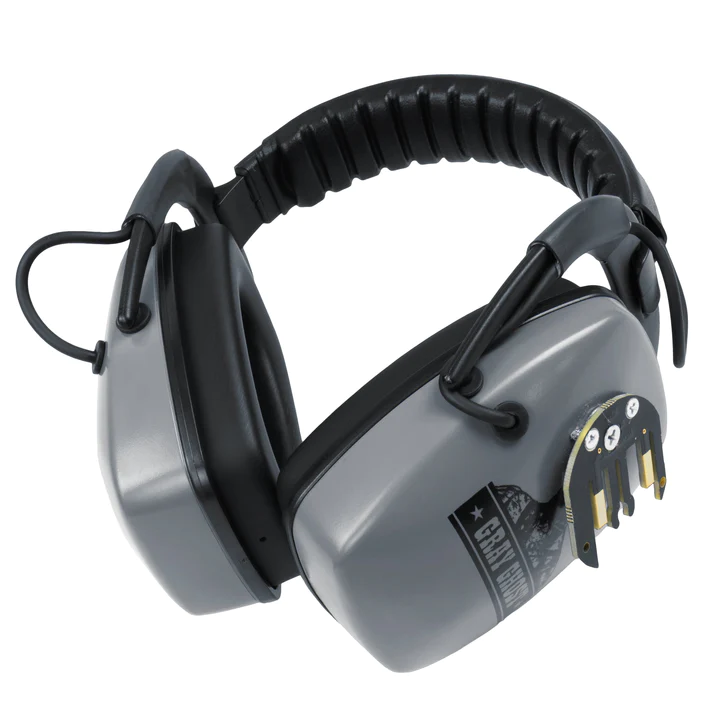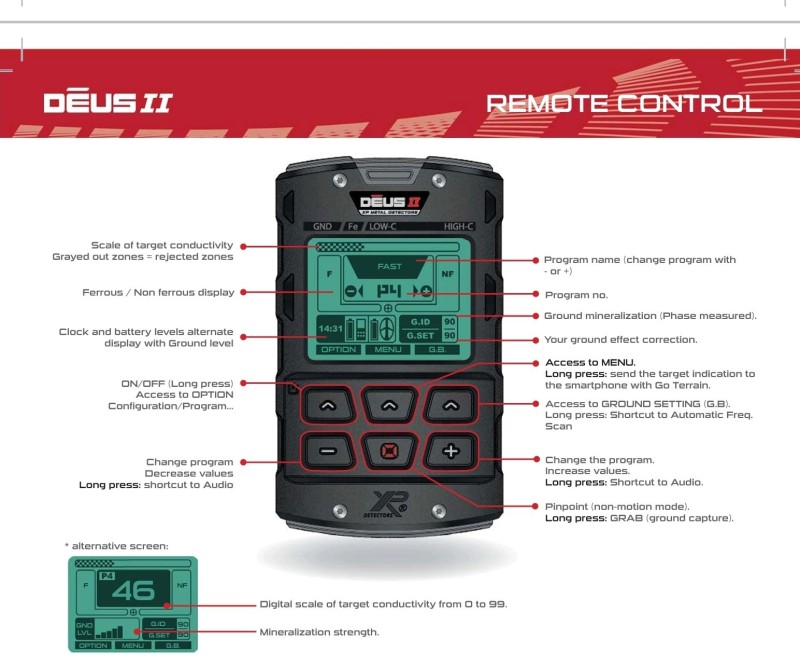-
Posts
6,114 -
Joined
-
Last visited
-
Days Won
32
Content Type
Forums
Detector Prospector Home
Detector Database
Downloads
Everything posted by Chase Goldman
-

Eqx 900 & Legend Separation
Chase Goldman replied to HardPack's topic in Metal Detector Advice & Comparisons
Bingo. FWIW - With the 900, I would personally up recovery speed from 4 and set the iron bias to max and back off on sensitivity to 20 or less to minimize falsing as much as possible in thick iron and see if you could cherry pick at least some shallow non-ferrous out of the iron muck recognizing you are just going to lose depth on deep non-ferrous regardless. I mean in thick iron, depth is pretty much out the window due to falsing, masking, and target ID down averaging, so one of the first things I do in a thick iron patch after upping recovery speed is lowering sensitivity, the filters never really do much. I know your test garden is showing you some potentially “optimal” settings but your test garden can’t really replicate all the myriad of real world 3-Dimensional ferrous to non-ferrous target spatial orientations, soil moisture conditions, and old target halo effects that can result in masking and falsing at your tough mining site. The Deus might be a better tool in the thick stuff as well. I would tweak Silencer up or use Goldfield with mild IAR unless the soil is very mineralized (in which case I would set IAR to 0) and again lower sensitivity to focus on unmasking shallow non-ferrous. None of the iron filter features on the peer detectors mentioned (Manticore, Legend) or Deus II are really going to work any miracles in your situation over and above your Deus and Nox 900. If neither detector is pulling non- ferrous out of the iron patches with these tweaks, it might be time to start the tedious process of scraping and removing iron. Good luck in any event. -

My First Experience With XP Repair Service
Chase Goldman replied to F350Platinum's topic in XP Deus II Forum
Yep. Thanks again for posting. You mentioned a very important point earlier as well, specifically, communication. I don’t think many of these repair centers realize the importance of comms and how much value there is in simply keeping the customer electronically informed of status. In this case, lack of a heads up email or text stating the repair was complete and shipped out with a tracking number and notification regarding requiring a receipt signature delayed receipt of the repaired unit at least an additional day because Bob had no clue it was arriving and was not available to sign for it or to leave alternate delivery instructions with the carrier. Something else others dealing with XP repair need to be aware of. -

My First Experience With XP Repair Service
Chase Goldman replied to F350Platinum's topic in XP Deus II Forum
Yes, not egregious but it definitely would have been nice if they did it all at once while the unit was already opened for the connector repair, because you do want to minimize disassembly on watertight cases. Not sure if you mentioned the fact that the port cover was worn in the warranty repair request form (even though it may have been visually obvious), but for those who might be in a similar situation, never hurts to explicitly mention such things so as to not leave them solely up to the discretion of the repair technician and let them also tell you explicitly whether or not it's covered by warranty. That way you up your chances of getting a freebie proactive replacement or can decide whether you want to pay for the non-covered repair while the unit is already in the shop. After many such electronics warranty repair experiences (primarily phones), I have learned to be annoyingly explicit in my repair expectations with these repair outlets, especially warranty repair where they are motivated to do only the absolute minimum necessary to satisfy the conditions of warranty. I know the remote is definitely going to outlast that plastic port cover as you have to unscrew it EVERY time you charge the unit as well as when you plug in wired phones. It's also easy to cross-thread which shaves a little more plastic off each time. It's all very annoying but I guess it comes with the territory on these watertight/dust tight IP compliant electronics. Nokta went with a metallic screw-in port cover and wire retaining lanyard on the Legend's control pod headphone/charging/data port. That might have been a better design move in this case, though it also can subject the connector threads to wear. No perfect solutions, I guess. -

My First Experience With XP Repair Service
Chase Goldman replied to F350Platinum's topic in XP Deus II Forum
Bob, First of all, thanks for the warranty repair report. It's good to do these for the benefit of everyone else who might have to eventually follow down this path so folks know the process and policy details regarding send/return shipping costs which vary across the board and how long to expect to be without their gear, etc. Encourage everyone to post their experiences in this regard. Couple of thoughts from the peanut gallery...different perspective. Maybe they will help allay some of your post repair concerns or not but thought I would share with the forum anyway. AFAICT - the port cover is not there for watertight integrity but simply to keep dust, debris and salt residue out of the connector (which I would recommend flushing with fresh water after a salt water hunt). So it's good to have but not essential. If it actually wears out, I probably wouldn't bother replacing it or might just get a replacement port cover and not bother with disassembly to attach the lanyard. You could also see if they would replace it under warranty if it can no longer perform its intended function but the cost to send it in and insure it, etc is probably not worth it. It's most likely considered a normal wear and tear item which is not covered under warranty anyway and might explain why they did not touch it during your repair, unfortunately. Would have been a nice touch if they replaced it. If they screwed up the watertight integrity of the remote due to the repair, they would still be liable for warranty repair if the remote is subsequently damaged due to water intrusion. As a result, I would think that they would be motivated to do the repair properly and restore it to IP68 compliance. I'd personally want to know that sooner than later and would use the older remote for water use rather than subjecting my new remote to water hunting abuse, in any event. Anyway, glad you got it back mostly fixed and have the peace of mind that comes with having a backup. HTH -
Since we are talking about a DD, this really has little to do with separation other than if there are multiple targets under a coils footprint, you may get some edge interference from targets that are detected at the edge of a coil and the smaller the footprint, the less chance of that happening in areas where you have high target density. There are advantages to DD elliptical coils in general and small ellipticals in particular versus round coils. The narrow width allows more side to side swing room when in tight swing situations such as brush or cornstalks as mentioned several times previously the longer length provides for more swing coverage that a round coil with a diameter the same width as the elliptical. For example, a 10x5 affords more side-to-side swing ability than a 10-inch round coil when there is less than 10 inches of swing room. It also provides the SAME amount of swing coverage as the 10-inch round, and if you use Geotech's rules of thumb for detection depth vs. coil size, a 5x10 elliptical has about the same depth performance as a round coil of approximately 6.3 inches in diameter. In the linked Geotech post there is a chart that shows the optimal target depth for a coil at 10 inches diameter is about 5 inches (not maximum detection depth) and for a 6.3 inch coil it is about 4.75 inches. In fact, Geotech's post which references some insights by Eric Foster discusses the pros and cons of small and large coils beyond just depth and might be a useful read for those who are interested this Deus II coil discussion.
-
Glad your are enjoying your new Deus 2. The beauty of the Deus/Deus 2 modular platform is that there are a LOT of configuration options - a lot more than just one or two aftermarket headphone choices. You can go with your current full up remote and wireless WS6 puck/backphone configuration or you can opt for several different options with the WS6 Puck as alternatives to the backphones: You can get a wired headphone adapter plate (about $20) that slides onto the WS6 puck and then plug your favorite wired phones (you can use your existing Legend wireless headphones in wired mode using the included wired connector) plugged into the puck to run untethered from the detector by just slipping the puck into a pocket or you can get any of several puck mounts/holders that enable you to strap the puck on your wrist or strap it to your belt or a shoulder strap or mount just the puck on your Deus stem and shaft. You can even plug a Bluetooth APTX-LL transmitter into your puck adapter and use your Legend wireless phones. Although the collective audio lag may not be ideal. You can also get full size third party headphones with a puck mount. Or get either of two WSA II wireless phones (WSA II Puck or WSA II XL full size over the ear phones) that lack standalone control features of the WS6 Puck. Since you are not an XP backphone fan, then WSA II XLs would be preferred, except that they cost about $170 - $200US. Here are some pics and links to alternatives to the backphones: WSA II XL: https://a.co/d/6bf2I7m WSA II https://a.co/d/g1qqqds Wired headphone adapter plate for WS6 or WSA II puck Puck stem adaptor mount. Both of the above are included in a single kit for about $19US at https://a.co/d/9xsAiiC Puck wrist mount https://a.co/d/1Oe2EbZ Detecting Doodads puck mount over the ear phones. I like these. They are weatherproof, have mute switch, and an audio input jack so you can use them with other detectors. https://www.detectingdoodads.com/store/p43/Over_the_ear_Treasure_Phones.html Quest XP Deus Compatible Puck Mount Phones https://seriousdetecting.com/products/hd-compatible-wireless-headphones-for-xp-deus-deus-ii-module?variant=45212256010524&srsltid=AfmBOorsywD1059wrPQ_-_7WfvgCLgS4lnmtc7LmL-9LBm1gxoEUd9mUeg0 Gray Ghost XP Deus Compatible Puck Mount Phones https://highplainsprospectors.com/products/detector-pro-gray-ghost-xp-platinum-series-wireless-headphones-for-xp-deus-xp-deus-ii?srsltid=AfmBOor65mL4mY2_exO_S8i556lbUA_b8fEcftHTFg4RIdoKmjKGnoF0ddY Hope this helps give you some options to consider as alternatives to the backphones you can spend as little as $20 or as much as $200 or more to address your issues with the backphones.
-
I'm surprised he hasn't turned one up yet as he's hit just about all my other bucket listers, so yeah, maybe next year. Just glad Bob lets me bottom feed off his permissions. It's been a good Fall/Winter relic season so far for both of us. I'm doing good on total quality finds, but can't get my coil over the old coppers like Bob can. Of course I have to drive two hours to pillage Bob's front yard and other Northern Neck permissions vs. his daily access. Despite that I'm holding my own and enjoy Bob's company, coffee, and permission access generosity. It's been a fun 2023, Bob, thanks and looking forward to a some more visits in 2024. Congrats on the Colonial Copper, Merry Christmas, and Happy New Year!
-

Simplex & Legend Headphone Compatibility?
Chase Goldman replied to CalReg's topic in Nokta / Makro Metal Detectors
The Original Simplex and the Legend use different wireless headphone protocols so the Simplex wireless headphones cannot be used with the Legend. -

Last Hunt Of 2023, Not Bad
Chase Goldman replied to F350Platinum's topic in Metal Detecting For Coins & Relics
Kids gotta party somewhere, hunters use farm fields to access the woods, and some farmers like to partake in the field, too. So if you are in a farm field or next to any kind of well travelled road, there is going to be scattered aluminum, and aluminum especially concentrated on the edges. -
They might connect, but if the headphones don’t support APTX-LL then there will be a significant delay as they will probably connect using the SBC code which is pretty laggy. Legend doesn’t support the low latency LC3 codec used by the latest Bluetooth LE wireless devices only APTX-LL for low latency wireless detector audio. Bluetooth LE is an industry standard and the LC3 codec is the latest and greatest low latency codec utilized by BT LE. But manufacturers can choose whether or not to make their BT LE devices compatible with third parties. Minelab has intentionally chosen not have their Bluetooth LE audio devices connect with 3rd party devices, so even though 3rd party Bluetooth LE devices with the LC3 codec are starting to appear on the marketplace, none of them will be compatible with the ML detector Bluetooth LE transmitters.
-
Thanks for the additional information, Lodge. FWIW - That bin at zero would knock out a lot of the flat and two-piece buttons we recover at our Colonial sites that fall in the 73 - 78 range. A lot of aluminum there too, though. No easy day.
-
To more directly answer your question, Minelab has locked down the BT LE on Xterra Pro, Nox 700/900, and Manticore BT LE such that you can only use the ML branded headphones that are specifically designated as accessories compatible with these detectors. ML appears to be coming out with a compatible wireless receiver called a WM-09 into which you can plug any wired phones or earbuds but it is not released yet nor do we know the cost. Otherwise, your only option is using a BT APTX-LL transmitter plugged into the Xterra/Nox/Manticore headphone jack as Mark pointed out above and compatible BT APTX-LL receiving devices/phones/earbuds.
-

Looks Like M8's And M15's Are Starting To Appear
Chase Goldman replied to phrunt's topic in Minelab Manticore Forum
Yep. I noticed that the banner changed from "add to cart" to "pre order" so it must have been a short window of opportunity before they sold out. Congrats on snagging them. -
It would be great if @Jeff McClendon would weigh in on this one. I think his last head to head amongst VLF detectors including the Legend and Deus 2 with the latest update indicated relatively small gap remaining in micro gold sensitivity vs. Legend. At the end of the day, I think Jeff has embraced the Axiom as his new gold machine over and above any of the VLF machines mentioned above, but noted significant improvement in the D2, such that "long way behind" the current crop of multipurpose SMF machines is no longer a fair characterization (unless you were actually referring to dedicated prospecting machines), though I do not recall any D2 v2 testing head-to-head with the Nox 800 or Manticore. I understand, Simon, that at least half of your detecting involves gold and also that you have relatively mild ground and not a whole lot of iron trash to deal with, so I get that the D2 may not bring anything game changing to the table for you. No detector does it all, as we know. Therefore, I am trying to determine whether the Manticore brings anything to the table for me to compliment the Deus 2 as far as relic detecting is concerned. I don't think that will know until I can get my hands on an M8 coil - which is getting rave reviews from fellow hot dirt/high iron relic detectorists who do have an M8 for their Manticore and who also have the Deus 2. All that being said, no argument from me that a small elliptical coil would definitely help matters wrt to small gold performance (and Jeff states this as well in the test post linked below) and of course in tight terrrain. I also link a field test outing where Jeff put the D2 head to head with the Legend (9" coil on D2 vs. the Legend's 10x5). Just trying to provide perspective on the D2's gold performance with facts vs. adjectives that may lack context. One additional point, I think earlier in the thread people were also mentioning that the D1 HF elliptical coil also operated at much higher frequencies. While true, I think that SMF detectors such as the Nox, Manticore, and Legend, as well as the Deus 2, have conclusively demonstrated that SMF gold modes, ostensibly operating at 40 to 45 khz top end frequencies are getting the job done on small gold, such that I think that if XP simply provides a D2 compatible small elliptical running at the same frequency FMF (XP's term for simultaneous multifrequency as implemented on the D2) range as the other three D2 normal search coils, would be sufficient.
-

Looks Like M8's And M15's Are Starting To Appear
Chase Goldman replied to phrunt's topic in Minelab Manticore Forum
It says "Pre Order Now" and Delivery between 1/1 through 1/9 if you order today. That doesn't sound like they are actually in stock. Did you get a delivery estimate when you ordered? -
They were probably focused solely on releasing the Xtreme Hunter two-box coil so they could recoup their R&D investment after announcing it 6 years ago. Maybe now that is behind them, they can focus on a fifth coil.
-
Welcome to the forum!
-
There are actually a LOT of incentives to move on from the Deus 1 despite the lack of the small coil. It's addressed a lot of the D1 shortcomings with respect to user interface, added SMF and retained single frequency operation, fixed Full Tones discrimination issues still present on the D1, improved ground handling overall (primarily a function of SMF), it has a great noise cancelling implementation, added multiple audio enhancements that make it an even better machine in iron, and added notch to Gold Field/Relic to knock out ground noise and the latest update improve Gold Field micro target sensitivity. I haven't used my D1 since I got my hands on the D2. But there is still room for improvement, beside the small elliptical, having a mono frequency option for the Gold Field and Relic programs would be welcome. But right now, like I said, its not holding me back much and from what I can tell, sales have been robust. Which unfortunately means that we'll probably be waiting awhile for that coil to come along.
-
First of all, I never said further discussion is pointless, I was merely pointing out the irony of the opposite meanings of "moot" as used in the UK vs. US (English as a second language). Second, XP knows all of what you stated much as we do as we've been asking for the small coil REPEATEDLY for more than two years and while making all those points. Ever since the D2 was announced, about six months before release. Send them an email. We're not the ones being non-responsive for two years. I'm simply being realistic based on XP's silence is deafening stance. There are other alternatives out there for subgram gold, which is not something I delve into much (though I do have the other detectors that can get after it) and for bushwhacking (Legend/Nox/Deus 1, if necessary, and Manticore with the M8). If XP wants to forgo that market, then that's on them. I'm done wailing into the darkness.
-
Yeah, if you ignore price.
-
They can easily make it waterproof by putting the battery in the shaft like they did with the white Deus 1 HF coils (such that it can be used on land or shallow water). The rub is making it dive proof to match the advertised capabilities of the D2 platform (though this did not stop them from releasing the Xtreme Hunter which also obviously can't be used in the water, much less at dive depth). This "technical issue" seems to be a small hurdle unless the coil electronics package volume is also a problem in that small coil form factor. Frankly, I'm done waiting for it and doing just fine without it as the other coils have not prevented me from doing anything I want or need to do with the D2 from hot dirt relic hunting, dodging corn stalks and cotton stubble, hitting salt beaches and routine coin shooting, so I am not losing any sleep over it. I've learned after 10 years that XP is gonna do what it's CEO wants to do, not what its customers necessarily want, although they have been listening to us more attentively lately. I don't really see it as a technically impossible ask, it really comes down to whether XP themselves see/understand the need, want to expend the effort and what they expect the return on investment will be. Moot is a funny word - in the UK it means subject to discussion. In the US it is more commonly used in the sense that the issue has been resolved (one way or another), therefore further discussion is pointless. Almost completely opposite meanings.
-
It would be helpful (to us) to know the VDI of this target, especially in relationship to the 0 - 38 VDI range you effectively notched out below. Knowing the base program for both would also be helpful (Sensitive, Full Tones?) and whether any other settings (reactivity, etc.) differed from the base program defaults. Note that if you are running full negative disc then there is NO iron bin and therefore you will get NO iron buzz regardless of your iron volume setting for any target even if it does have a "ferrous" component (intermittent "ferrous" IDs). What I don't know is if the horseshoe ferrous-non-ferrous display would read out the same regardless. Also, note that if you are running disc at "0" or have set a notch at "00-00" then no targets that fall in the negative disc bin will be audible even with iron volume ON. You can only hear targets in the negative disc area if you set disc less than 0 and then you will only audibly hear targets above that negative disc setting as ferrous. I really no longer use the "disc" programs (normal, fast, sensitive, Deep HC, etc), favoring Relic instead which does not have disc, but Iron Amplitude Reject. It gives more expressive audio, though not tone ID because it is basically pitch - so I get a fairly clean differentiation between ferrous and non-ferrous at depth. I use the TID as a guide for making dig/non-dig decisions based on the typical IDs of the trash at the site (which means I am digging all non-ferrous and all non-100% iron). When I DO run those disc programs, I typically DO run with disc in the 7 to 10 range because it helps mitigate down averaging. If the target is iffy with mixed ferrous and non-ferrous components (regardless of program), I use the horseshoe Ferrous/Non-Ferrous display to get additional info, turn on the target (rotate 90 to 360 degrees), and interrogate it with other programs with different frequencies and tone setups, as necessary. You are correct, offset shouldn't have an effect, it only determines the "dynamic range" of full tones for the non-ferrous targets. 0 being the traditional full tones (tones ranging from low and difficult to distinguish from ferrous to the highest full tone for the highest conductors), 10 basically giving you some separation from the lowest ferrous full tone to the ferrous grunt tone, and 40 making all non-ferrous have the highest tone pitch in full tones. This fulltones offset is a new feature that I have not experimented with much and will be interested in what you find out and I may play with it some more as well.
-
Actually on the D2 its the Horseshoe Ferrous/Non Ferrous display which best helps identify ferrous to non-ferrous ratio regardless of ID shown (some do use the X-Y display as well but the Horseshoe is more analagous to the Legend ferrocheck display), plus iron volume plus non-ferrous tone clipping is a pretty good indicator as well.
-

$600 Off The Axiom At Garrett Direct
Chase Goldman replied to Lead Detector's topic in Garrett Metal Detectors
Yep it gets the price more in line with what you can get when you go through a trusted dealer.



